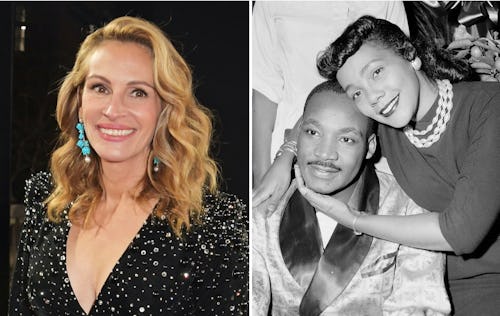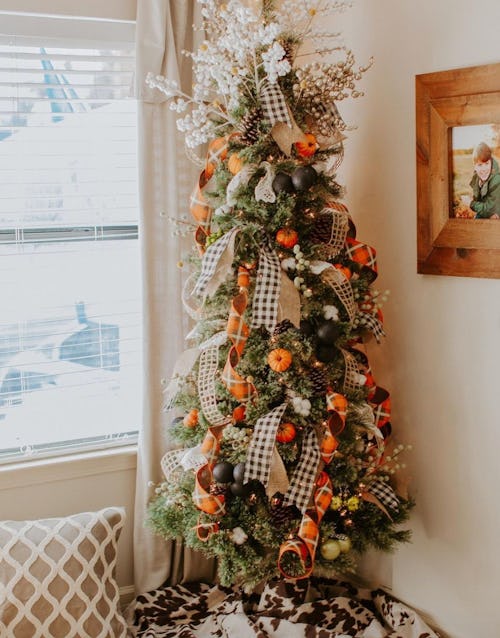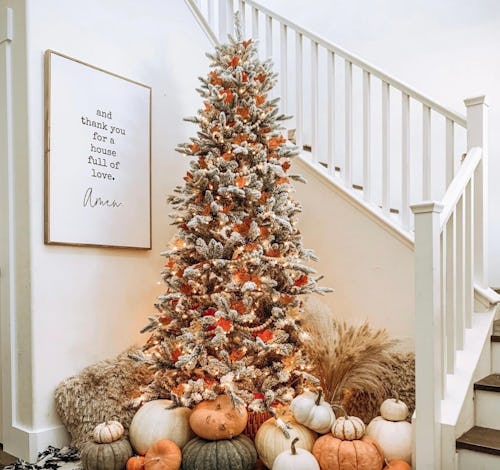
Last September, my 4-year daughter announced to us one day that she had decided she would be Elsa for Halloween. Our young neighbor, an exuberant 3-year-old who never goes into a project half-assed, had become obsessed, as young girls do, with Frozen, and it had already been the dominant IP in our house for months. Her choice shouldn’t have been surprising, but when I thought about my daughter, inventor of worlds, scrappy rascal, teller of jokes from the toilet, donning a store-bought princess dress and trotting out her conformity for all the town to see, I cringed. No kid of mine was going to be a basic bitch. I slowly coaxed her to go with a much more respectable choice, an unbranded owl, and commissioned a handmade costume from my mother, who would have happily made an Elsa dress had she been asked.
The owl costume arrived, an exquisite display of love and skill, adorned with hundreds of hand-affixed feathers and stuffed in the rump so that my daughter’s lithe, delicious body resembled an egg when she tried it on. At first she was confused by the whole thing, where to put her arms so the wings would flap, how to fasten the mortarboard headpiece, what to make of her transformation into something that was certainly not a princess. But soon she came to love it, carefully stepped into it and flew around the living room, proudly represented at her preschool Halloween parade, where every single child in her class was either a firefighter or a PJ Masks character, and took it for a spin around the block trick-or-treating until she announced with satisfaction that she was done with Halloween and wanted to go home and sort her “collection.”
Watching her that week (yes, Halloween is a week long if you have kids under 12), a nocturnal, brown and beige, supposedly-wise mouse-eater among all those lemmings, I felt so self-satisfied. But when Halloween was over, and she informed me that all she wanted for Christmas was an Elsa dress, I felt a tinge of panic, and later, something like shame.
Much has been written lately, to my delight, about momfluencer culture. Pornographically perfect lunches, birthday parties that require themes and planning spreadsheets, handmade Halloween costumes, ahem, all tell the lie, filtered through women but invented by men, that motherhood is the role women were meant to play, and that playing it involves a magazine-spread-worthy level of organization, perfection, and self-sacrifice. I am not immune to this. But there is a spinoff of this culture, very visible in my Bay Area parenting community, that the owl incident invoked for me; this quest, for progressive mothers, to have interesting children. There is a collective insistence, among people who otherwise would scoff at parents dressing their children or dictating their after-school interests, that subcultures are better than the mainstream, that wearing black is better than wearing pink (except for boys, where pink is super rad), and a child exploring their gender identity is a sort of progressive parenting badge of honor. It is pervasive in my corner of mommyland, and as you can already tell, I am guilty of perpetuating it.
One of the reasons I want my daughter to embrace the margins is because that’s where I’ve most found companionship: not in the Elsas of the world, but in the owls.
I feel it arise in myself and in others when another white mom confides that her children just love sushi, or when it’s revealed that a friend of my daughter’s refuses to wear dresses because they’re “too girly,” or when I hear a badass neighborhood girl with an androgynous name tell me that for Halloween, she wants to be not Hermione but a Dementor, and I think, “I wish my kids were that cool.” Of course, there are limits to what most parents are willing to consider as desirable levels of quirkiness. Though I know many autistic children worth bragging about, for instance, but I don’t think their parents are often invited to do so.
If I’m being cynical, I believe we parents do this because, like the momfluencers, we see our children as accessories. It’s the same shit, just trading leather wrist cuffs for sequined hair bows. If I’m being generous, I think there’s something protective in our wish that our children reject the dominant narratives — we know that conformity never really got us anywhere, so we’d rather our children signal rebellion, even if it is perhaps just in the service of conforming to their parents’ taste for nonconformity. One of the reasons I want my daughter to embrace the margins is because that’s where I’ve most found companionship: not in the Elsas of the world, but in the owls. I’m more terrified, in a way, of her being conventionally attractive, feminine, high-achieving than I am of her not being these things. It’s more likely that she’ll find a path to herself in the metal bands, the debate teams, the funny girls, I tell myself. But in my heart I know that rather than being a surefire means toward liberation from standards of femininity, masculinity, and cool, these places have their own versions of exclusion, too. Even as a drama nerd, we all knew who was going to be cast as Abigail Williams in our high school’s production of The Crucible, and who (me) would be the best friend, Mercy, who didn’t have even one sexy scene with John Proctor.
After I had my first child, a son, a friend who was expecting a female baby expressed her terror at the idea of raising a daughter. It did, I agreed, sound daunting. Sure, there was always some variability, but boys, we believed, were straightforward. Even as we vowed to help them unpack their privilege, it protected them. Raising girls, on the other hand, was full of landmines. People would underestimate them. They would learn to compare their bodies to unachievable, arbitrary ideals. They would binge or purge or starve and, when, if they were lucky enough to locate the sources of their pain as anywhere outside themselves, they would blame their mothers.
I was just barely learning to unpack and undo all of the damage that being a girl had done to my psyche. How could I possibly manage to go in for another round?
When my son was born, my husband was not terrified. He figured that, if his son discovered therapy sooner than the 40 years it had taken him, his work was done. When I learned that my second child, growing in my uterus, would be born with a vagina, I was haunted by this conversation. I was just barely learning to unpack and undo all of the damage that being a girl had done to my psyche. How could I possibly manage to go in for another round? In my mind, the Elsa dress was the beginning of this trial. But, in fact, it started the moment my daughter was born, and it wouldn’t end in my hiding her away like Persephone in a dumpy owl suit.
While being a girl can be treacherous, one of the many bummer things about the patriarchy is that it ruins women from having their own relationship to aspects of womanhood that can actually be quite joyous and that are even envied by many men. I am a woman who, at almost 40, loves getting dolled up, but even now when I’m not explicitly performing for anyone, it’s hard for me to do it without imagining how many times in my life I did it under psychological duress. Before I had a daughter, I used to put on “fashion shows” for my husband and son, not because I wanted their approval, but because playing with my appearance felt like an art form, and I wanted to celebrate how liberated I felt from the girl I used to be. My son would join in, piling on my accessories (he clearly had not heard the famous Coco Chanel quote) and begging for “lipstick kisses.” Now, I keep my fashion shows to myself, lest my daughter absorb more than she already is about her looks being paramount. When my son runs back into his room before we head out to an event and makes everyone wait in suspense while he changes into a button-up shirt and bow tie, which he expects us to ooh and aah at, it is not loaded in the least. But when my daughter puts on a tutu and says, “Mama, I’m pretty now,” I am so overwhelmed by my own fear of this incredible person sacrificing herself up to the beauty gods that I cannot be in any way curious about what she means by that, let alone entertain the idea of validating her good feelings.
But the liberating and terrifying thing about parenting in our culture is that it is likely that the decisions we make in these moments, to let our kids dress as princesses, to compliment our daughters’ appearances, to reinforce unconventional instincts and not basic ones, make little to no impact on our children. Children pick up on the greater overall context of our personal choices and interactions — whether we eat for pleasure, whether we enjoy our own bodies — but they don’t keep a tally of exactly how many times we praised their minds versus their looks. Maybe modeling how messy it all is — that somewhere down the line we did think only of how others perceived us but now we’ve found satisfaction in our own perception — is the only path forward because it is honest, and because their journey on the socio-cultural carpet ride is not something we can stop, not really even something we can truly prepare ourselves for.
And though I will never stop praising her intelligence or spunk or generosity, in the dark, with all $19.99 of her costume aglow, I think to myself that she is absolutely radiant.
The dumpy owl taught me that neatly packaging eccentricity for my children, like it’s something they can buy at a kids store that only sells wood and wool, is not much different than the ways that Disney neatly packages conformity. And it made me think that all people, in a way, experience outsiderness and fear that very experience for their children. When even Meghan Markle insists that she was ugly in high school, perhaps not a one of us believes we’re basic. Maybe our stories of being alternative are just attempts to work through the pain of having failed to live up to society’s standards, which means we’re in the same camp as literally everyone. Maybe, when projecting all of female oppression onto a small, synthetic blue dress with admittedly lovely white gloves is also, in a twisted way, anti-feminist.
This year, my daughter has upped the ante. She wants to be a “rainbow unicorn princess.” Her old nanny, who is like a grandmother to her, is not the kind who spends two months painstakingly sewing your Halloween costumes, but one who takes any excuse she can get to order things from Amazon for you that either make noise, light up, or motor around the house with the sole purpose of breaking someone’s ankle. The rainbow unicorn princess costume, whose origins are surely unethical, is infused with LED lighting. When my daughter puts it on, she invariably invites whoever happens to be there to witness it as the gods of luminescent apparel intended, in her room with the lights turned off. When she jumps up and down and ushers me into her viewing chamber, I am still at a loss with how to respond, though I am experimenting with not disparaging her basic bitch instincts. And though I will never stop praising her intelligence or spunk or generosity, in the dark, with all $19.99 of her costume aglow, I think to myself that she is absolutely radiant. And I’m getting comfortable with the idea of telling her so.
















































